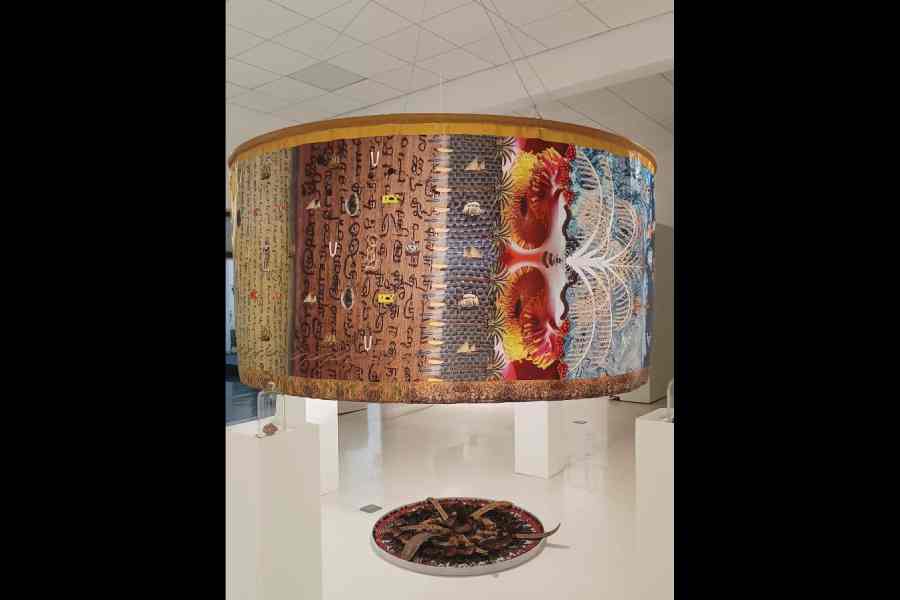Seeds gain a mobility of sorts as they are dispersed by wind, water, other natural forces and by the droppings of birds and beasts. In the same way, plants, instead of being rooted to the soil in which they grow, migrate all over the world, mostly through human agency. The hitching together of art and science catalysed the imaginatively put together exhibition, Travelling Plants: A Transdisciplinary Project, held at the Indian Museum recently. Curated by Lina Vincent and supported by the Institut Français de Pondichéry, Alliance Français, Madras, and Goethe-Insitut, the exhibition focussed on the environmental, political and sociological consequences and underpinnings of such motility.
The five artists who participated were Wendy Therméa from France, Karolina Grzywnowicz from Germany, and Rashmimala and Waylon J. D’Souza from India; the fifth participant from Sri Lanka, Danushka Marasinghe, dropped out midway for personal reasons. It all began at IFP with its rich collection at the Pondicherry herbarium where the artists were invited for a residency. There they interacted with scientists to discuss strategies for preserving nature’s gifts.
Garden of Time (picture), the colourful circular structure emblazoned with various motifs from Hindu mythology and elsewhere, created by D’Souza, was the first artwork that may have caught the visitor’s eye. It was suspended from the ceiling in the middle of the huge room with an exotic kolum or rangoli displayed on the floor under it. The kolum was made out of a wide variety of seeds variously derived. D’Souza’s use of Hindu mythology, the history of maritime commerce, and current ecological and environmental concerns to create the artwork in the form of a saree with a pallu was quite amazing. It highlighted the future of the Indian landscape.
Therméa’s poetic video installation, Lekilib (Balance), explored how the water hyacinth brought together the island of La Réunion, where she is from, and India. It also revealed the paradoxical nature of this plant — invasive though it is, it can absorb up to 10 times its weight in hydrocarbons. The delicateness of the artisanal weaving utilising water hyacinth fibres indicated the duality in the plant’s nature. The artwork struck a balance between a traditional craft and cutting-edge technology, between destruction and creation.
Rashmimala’s Trailing Traces digs into the IFP herbarium’s archival records of the Amaranthus to expose its multi-layered history. To quote the artist’s statement: “The plant (alive or dead), and the information-impregnated pollen grain can narrate multiple stories of its being; pollen is not only the key to the plant’s survival, it also offers clues to climate change. It could be hidden deep in the soil, waiting to be discovered.” The display of the botanical records added to the beauty and accessibility of this section.
The Nilgiris in South India are the battleground where successive rulers — from the British government to contemporary politicians — have tried to wrest the shola forests, grasslands and rivers from the indigenous Toda, Kurumba, Kota and Irula tribes. The forests have been central to their survival and to their culture. Grzywnowicz looked into their precarious situation in her video installation, Exotic Plants.
In the 19th century, the British turned the Niligiris into their summer resort and systematically replaced indigenous vegetation with tea plantations. The trend continues till now when tea has become the backbone of the region’s economy.











